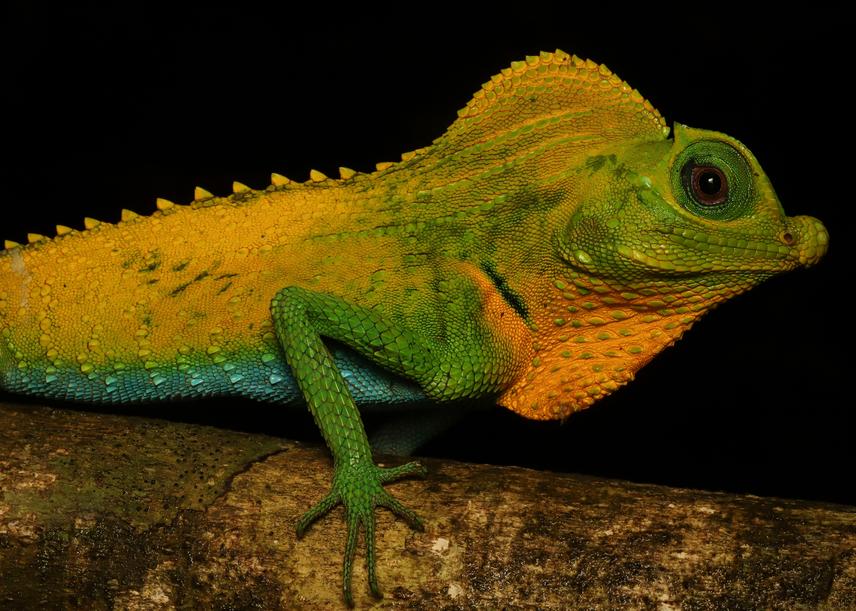Shanelle Ashwini Wikramanayake
This project aims to engage with plantation companies in southwestern Sri Lanka to strategically establish and manage reforested zones as Other Effective area-based Conservation Measures (OECMs). OECMs are areas outside formal Protected Areas that are managed to support long-term species persistence.

Lyre-headed lizard (Lyriocephalus scutatus). ©Shanelle A. Wikramanayake.
Sri Lanka’s southwestern rainforests are a Global 200 ecoregion, part of a Biodiversity Hotspot, and include several Key Biodiversity Areas (KBAs) recognised for exceptional levels of endemism. Yet, less than 10% of these rainforests remain (~27% island-wide), largely due to conversion and fragmentation from commodity plantations. Climate change further threatens this region, with rising temperatures and increasingly severe and unpredictable weather. In its report to the CBD, the Sri Lankan government committed to increasing forest cover to 30% by 2030 and involving public and private sectors in achieving 30x30 biodiversity targets.
Plantation companies certified by the Forest Stewardship Council (FSC), Rainforest Alliance, or Roundtable on Sustainable Palm Oil (RSPO) are required to set aside low-intensity management zones for biodiversity conservation. Properly implemented, these areas can serve as OECMs that contribute to national and global conservation goals and support the persistence of endangered species.
Our project aims to guide strategic reforestation within these zones to restore microhabitats critical for tropical species. We focus on two threatened, endemic lizards—the lyre-headed lizard (Lyriocephalus scutatus) and the rough-nosed horned lizard (Ceratophora aspera)—which are highly sensitive to environmental change. Microhabitats are essential refuges that buffer tropical species from extreme conditions.
By deploying temperature loggers across rainforest and plantation sites, we will identify the thermal environments required for these species to persist and replicate those conditions within plantation OECMs. Our research will generate data on lizard demography, ecology, and physiology to inform species-specific conservation plans and a broader habitat restoration framework for reforested plantations.
Header image: Rough-nosed horned lizard (Ceratophora aspera). © Shanelle A. Wikramanayake.